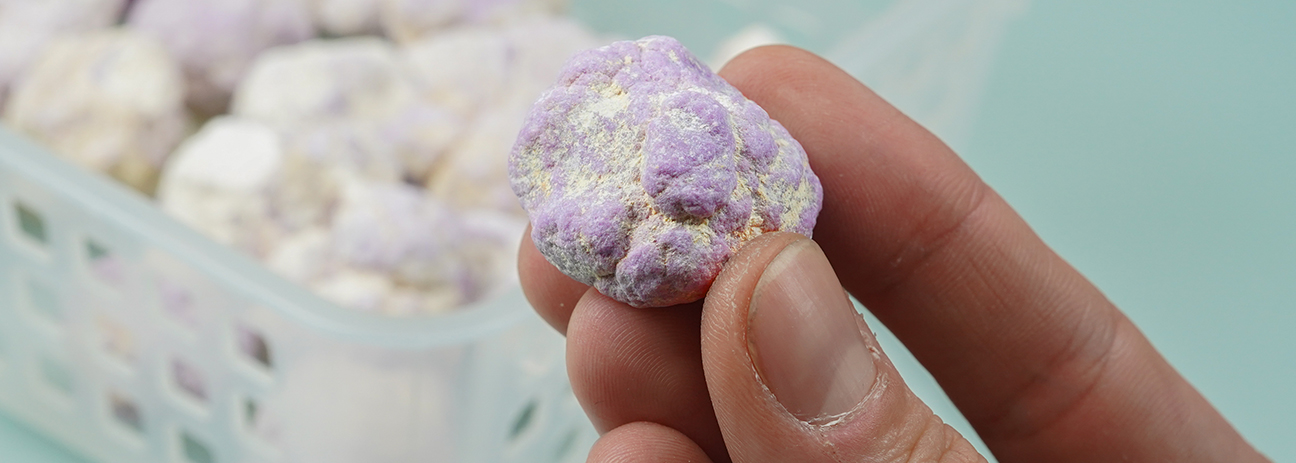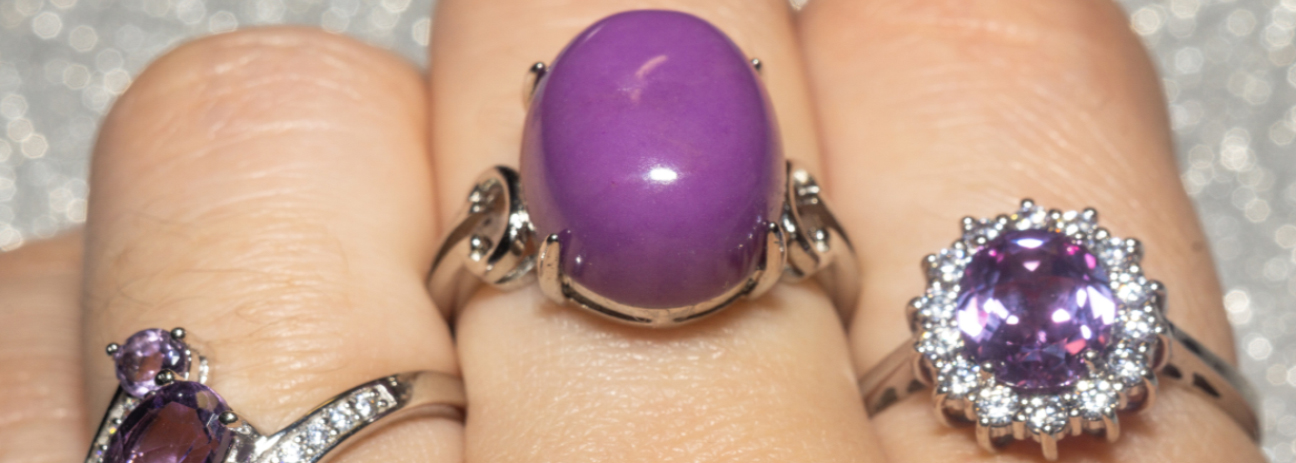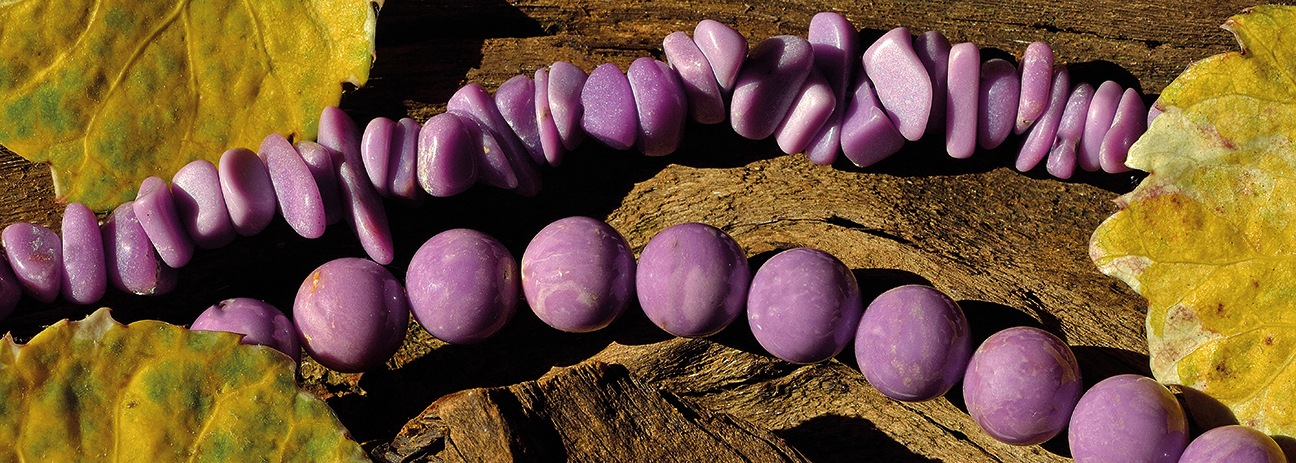
Phosphosiderite - meaning, effect and application
The intense violet-purple phosphosiderite comes from the Atacama Desert in Peru. Still a rather unknown gemstone, the mineral is inspiring more and more people with its visual and energetic effect.
The invigorating and strengthening phosphosiderite helps us to implement our plans and ideas with energy. Thanks to this stone, we can cope with the changes that occur during the year, in the context of projects or in life in general. Our weaknesses can be balanced out and phosphosiderite can help us get back on our feet after small failures. If we are too indifferent towards our fellow human beings, the stone gives us a little nudge towards more openness.
Stringed beads, jewelry. focal components for jewelry shops and other shops

Mineralogical profile of phosphosiderite
Chemical formula: FePO4 - 2 H2O
Mineral class: Phosphates, arsenates and vanadates
Formation: Phosphosiderite is formed magmatically in phosphate-containing granitic pegmatites, often through hydrothermal transformation of other phosphates.
Color: pink, pink, lavender to red-violet, yellow, orange, green or white
Luster: vitreous luster
Crystal system: monoclinic
Mohs hardness: 3.5 to 4
Cleavage, fracture: good (imperfect); uneven fracture
Occurrence, main supplier countries: South Dakota USA, Mexico, Chile, Argentina, Brazil, Portugal. Type locality is the Kaltenborn mine in Overath near Cologne.
Appearance: Frequently only tufts or crusty coatings on bedrock, rarely small crystals, spherical aggregates and druses. Occasionally also in the form of dense masses suitable for jewelry.
Use: Phosphosiderite is a rare, little-known mineral. Only recently have compact stones from Chile, Mexico and the USA been processed into jewelry.
In gemstone healing, phosphosiderite is used as an invigorating and strengthening stone. In astrology, phosphosiderite is used to activate the dynamism of Aries and the regenerative power of Scorpio.

Origin of the name phosphosiderite and synonyms
Phosphosiderite was discovered in 1858 by French mineralogist Alfred Lewis Oliver Legrand Des Cloizeaux (1817 - 1897) and was initially called whoreaulite type I. After detailed investigations, Willy Bruhns and Karl Heinrich Emil Georg Busz named the newly discovered gemstone after its composition of phosphate and iron (Greek “sideros”) in 1890.
Historical names for phosphosiderite are clinobarrandite, clinostrengite and metastrengite; vilateite is a manganese-rich variety.
Phosphosiderite items, e.g. ear studs and bracelets for reseller
